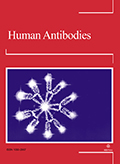Authors: Tran, L. | Vogel, W.V. | Sinaasappel, M. | Muller, S. | Baars, J.W. | van Rijswijk, M. | Dinant, H.J. | Beijnen, J.H. | Huitema, A.D.R.
Article Type:
Research Article
Abstract:
Rheumatoid arthritis is a destructive inflammatory joint disorder. Pre- and mature B-cells, characterized by CD20 antigen expression, play an important role in the inflammatory process. Rituximab, a chimeric monoclonal antibody against the CD20 antigen, has been approved since 2006 for the treatment of patients with rheumatoid arthritis. However, not all patients benefit from this treatment. Persistent activity of the disease has been reported despite treatment with rituximab. Imaging of radiolabeled rituximab can be used to monitor the biodistribution of rituximab, and potentially to predict the efficacy of the treatment. In this study, rituximab was radiolabeled with 124 Iodine for positron
…emission tomography (PET) imaging. The aim of this study was to investigate the pharmacokinetics and biodistribution of 124 I-rituximab in patients with rheumatoid arthritis, to establish the optimal procedure for PET imaging. Eligible patients received 50 MBq 124 I-rituximab, corresponding to approximately 1.5 mg rituximab. Wholebody PET/CT imaging was performed at 10 min, 24 hrs, and 48 hrs post injection. The total body activity, radioactivity in whole blood, and rituximab serum levels were determined. 124 I-rituximab has favorable pharmacokinetics for targeting of (pathological) B cells and imaging over several days, but only after pre-treatment with unlabeled rituximab. In addition, protection of the thyroid is recommended to prevent uptake of released 124 I.
Show more
Keywords: Rituximab, rheumatoid arthritis, PET imaging, pharmacokinetics, biodistribution
DOI: 10.3233/HAB-2011-0237
Citation: Human Antibodies,
vol. 20, no. 1-2, pp. 7-14, 2011
Price: EUR 27.50





